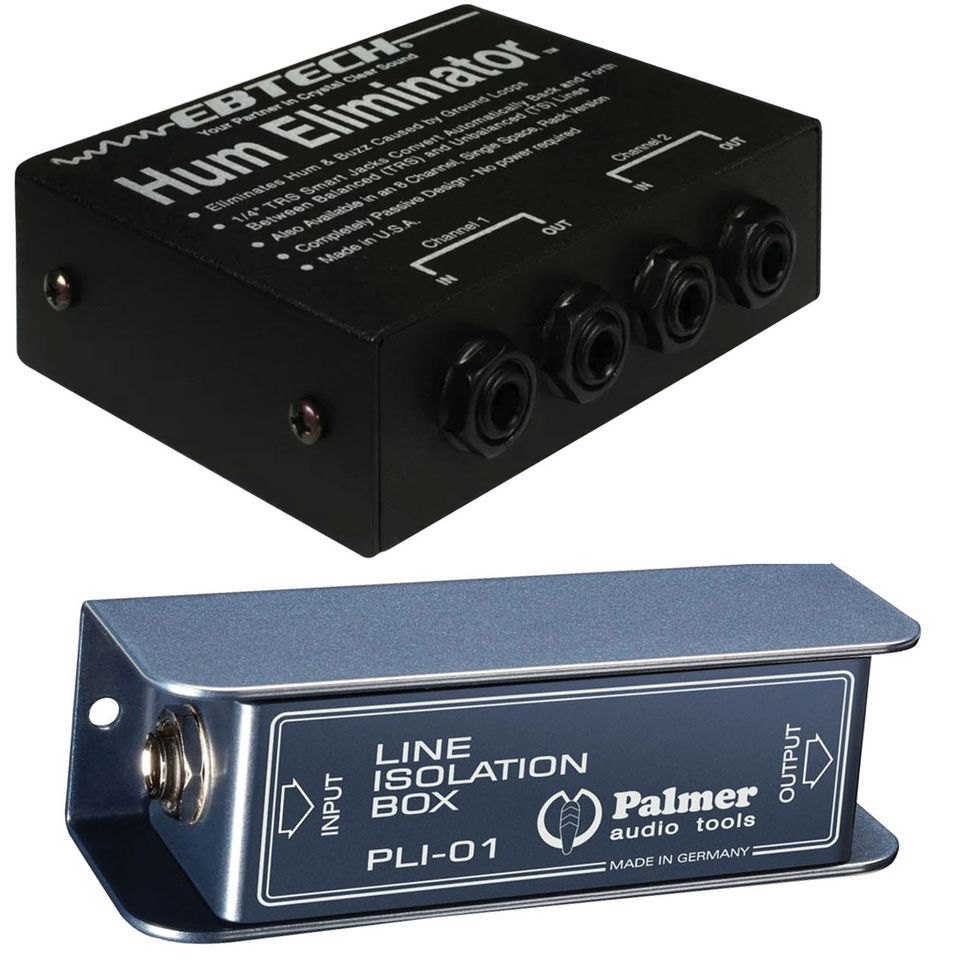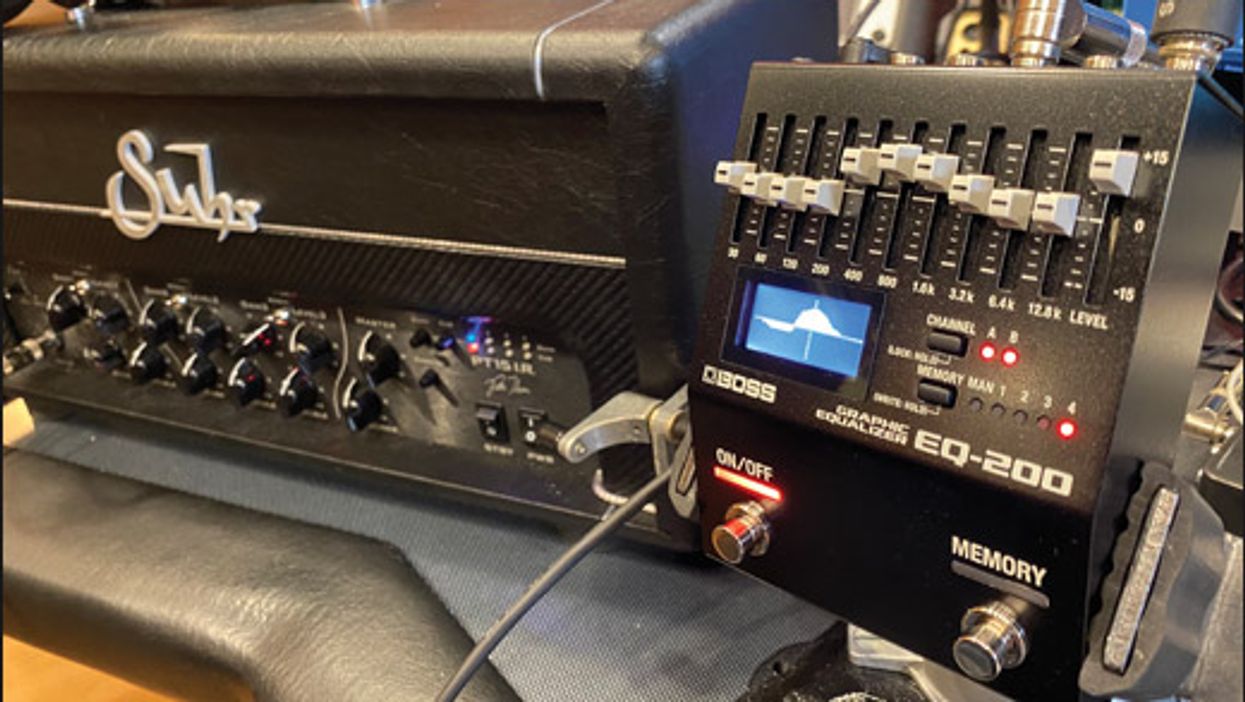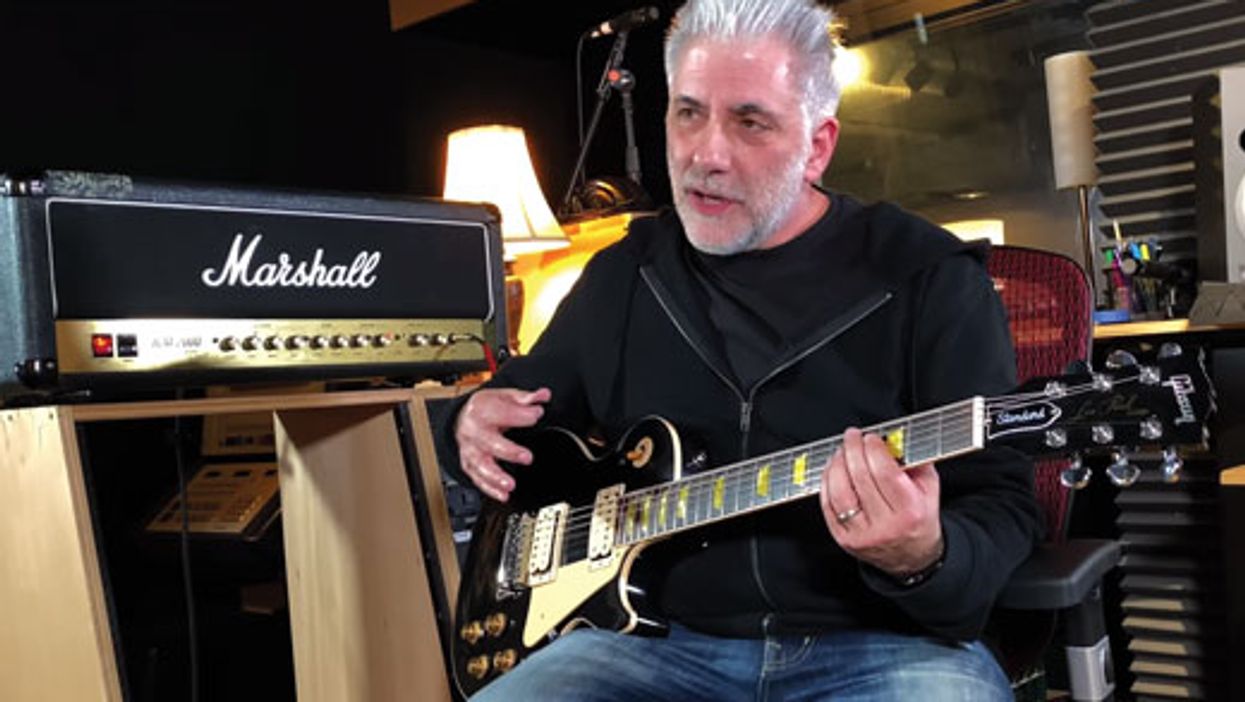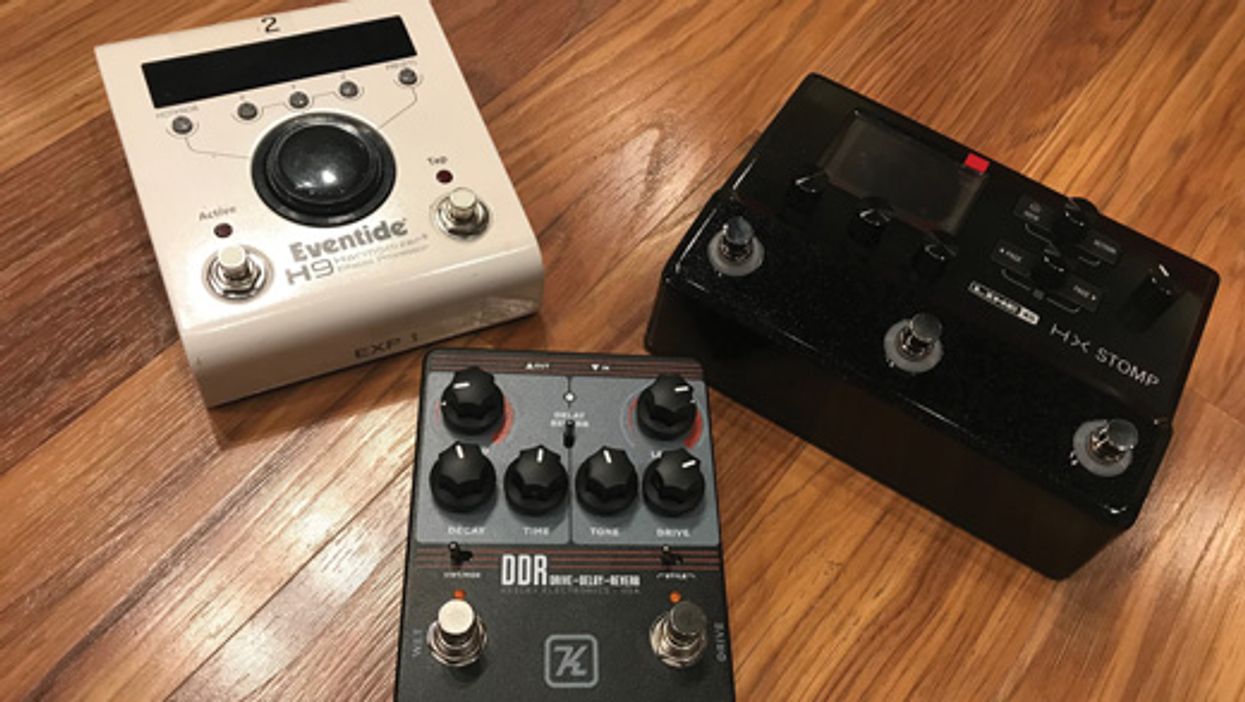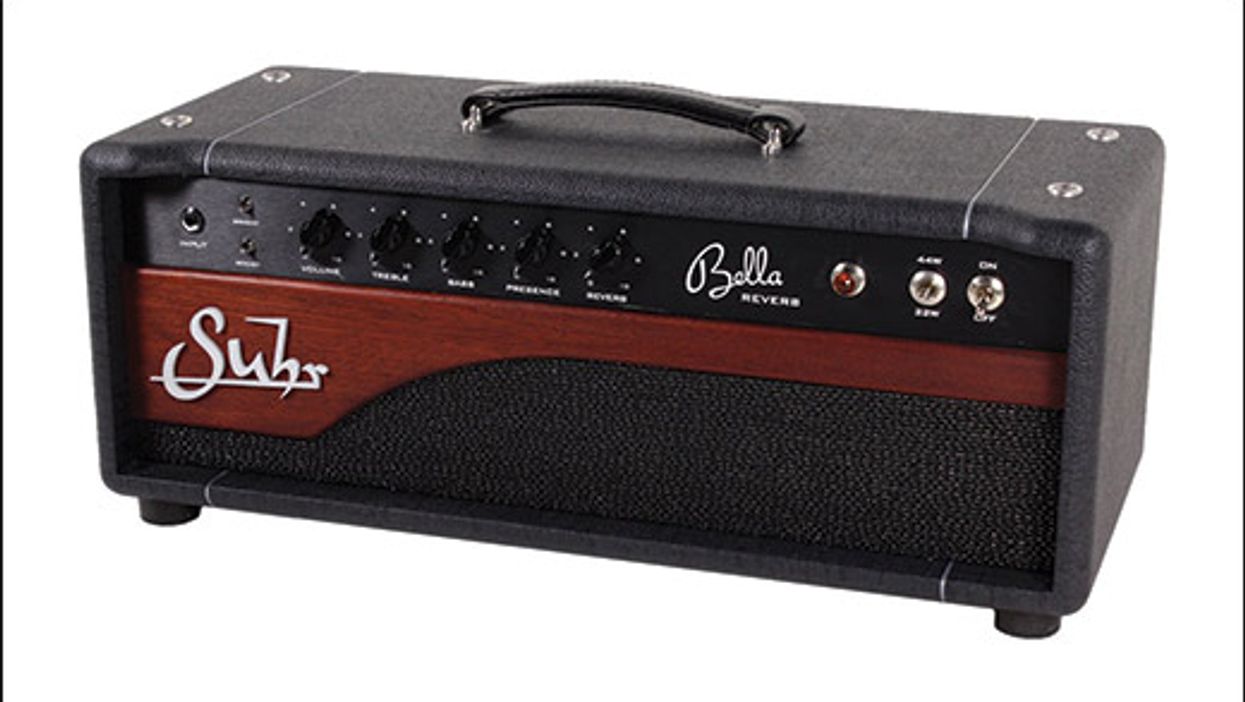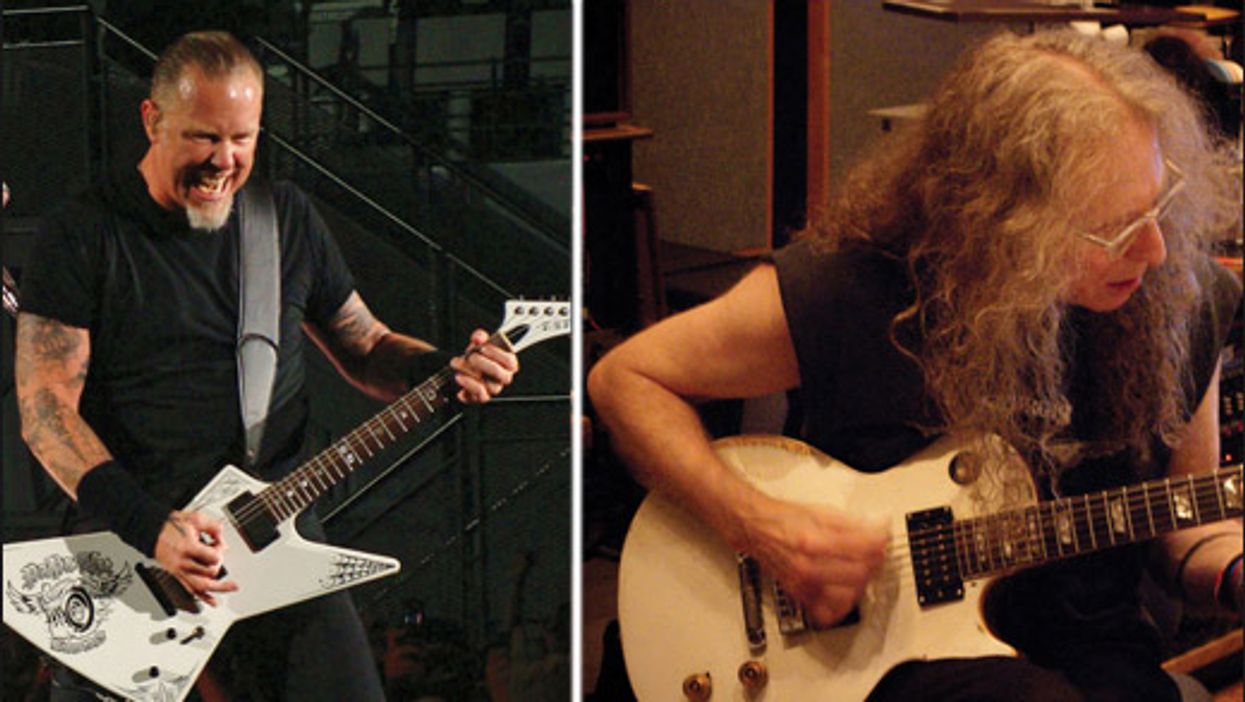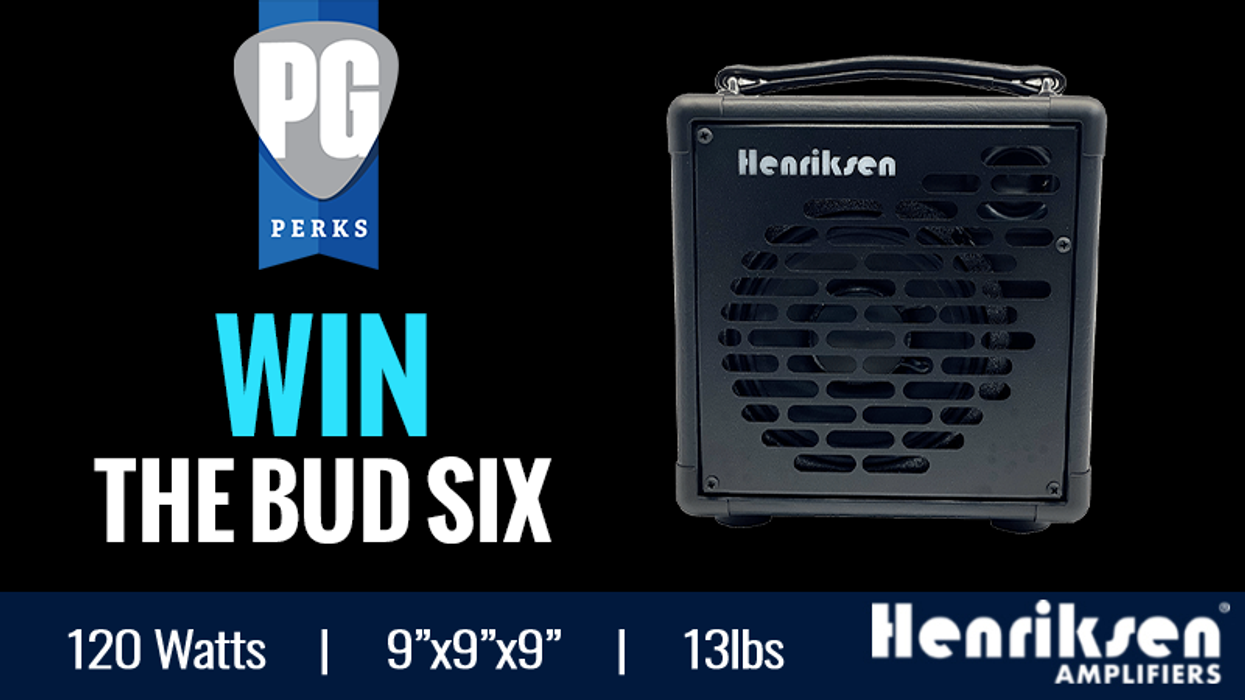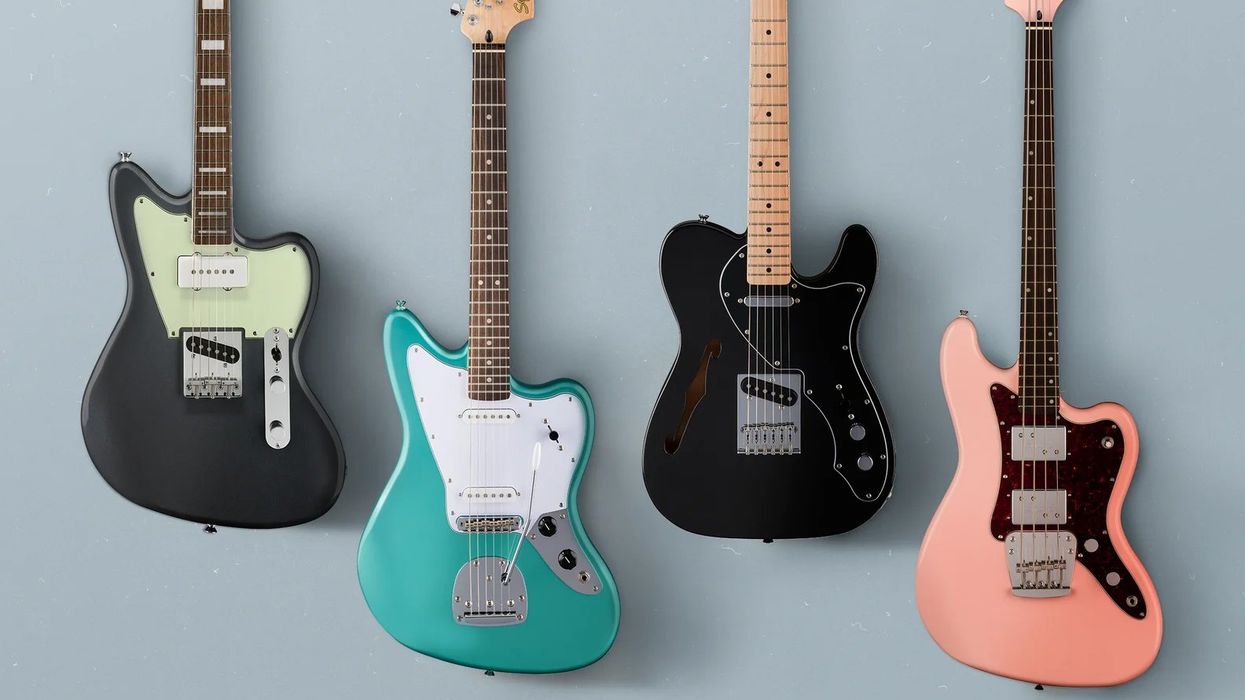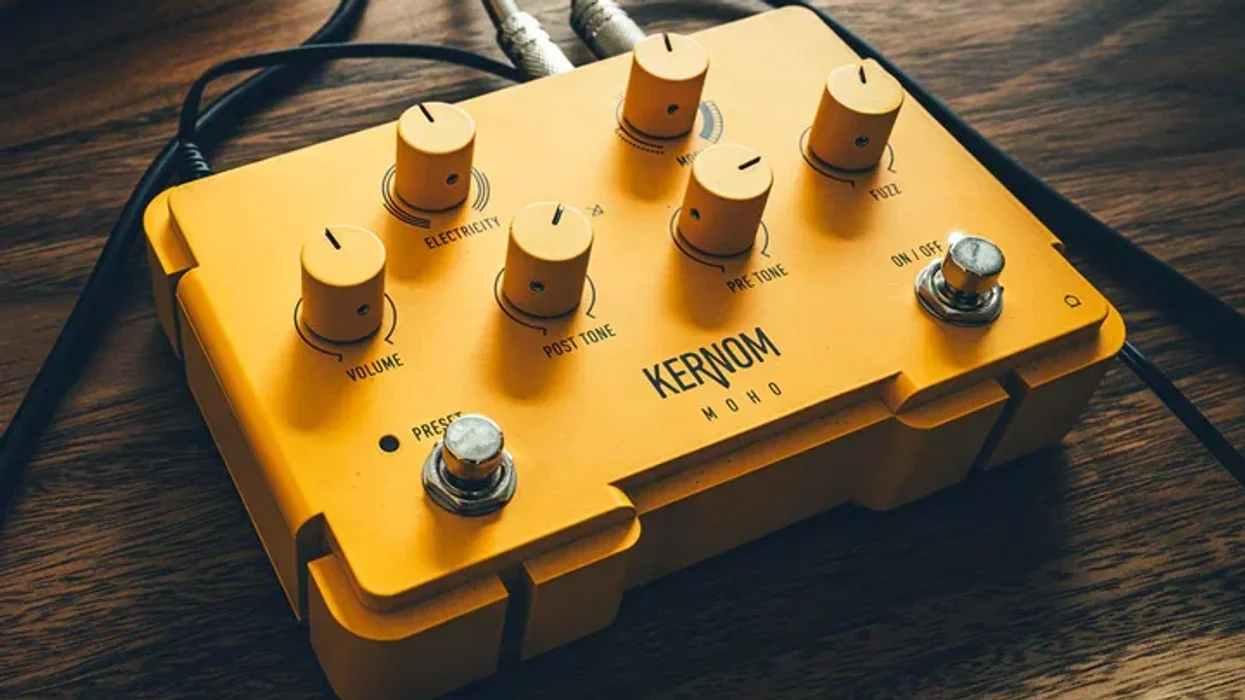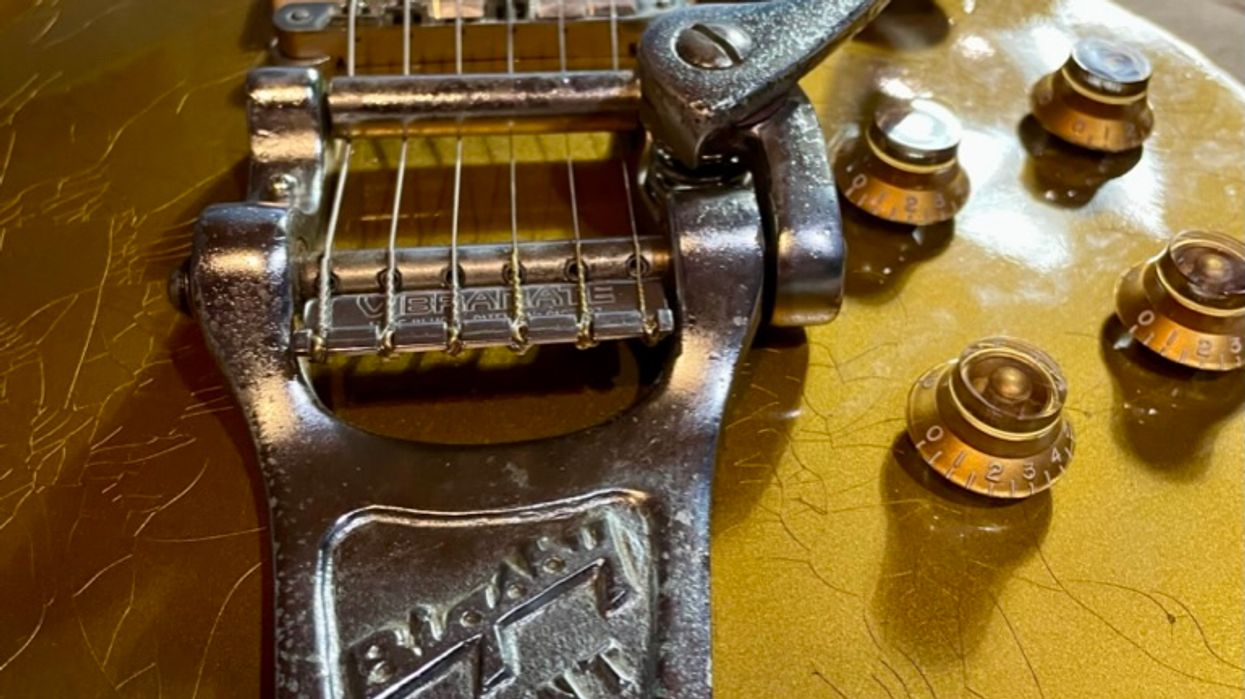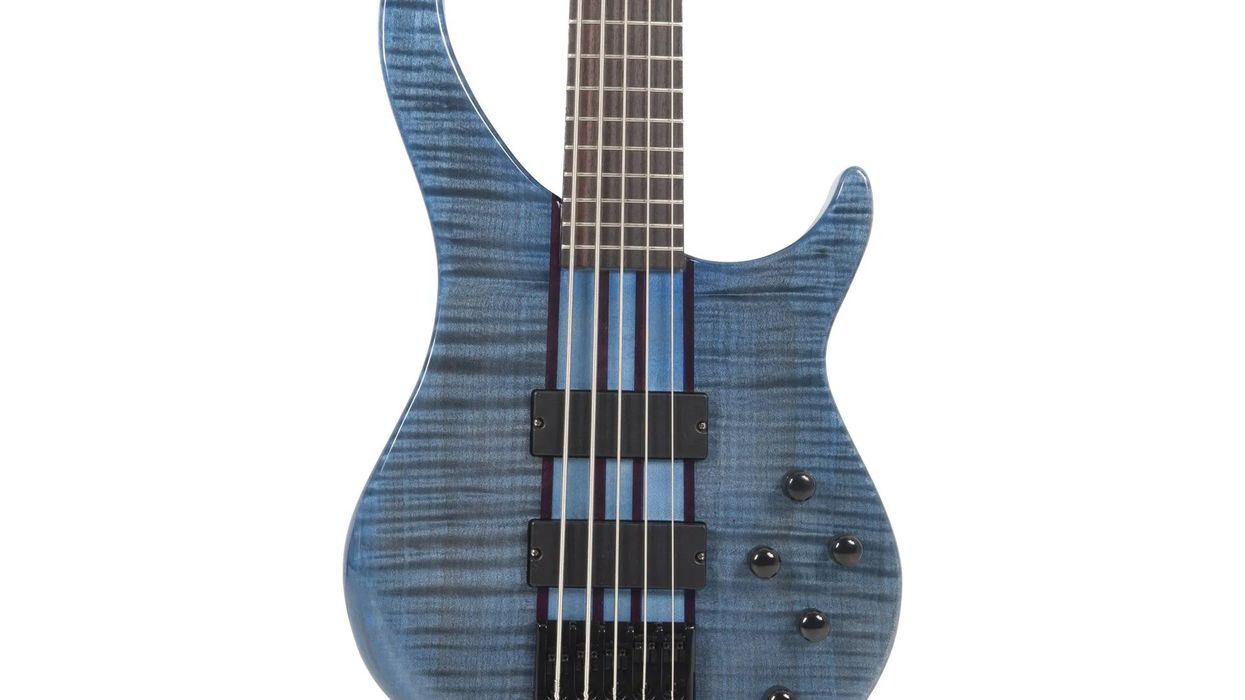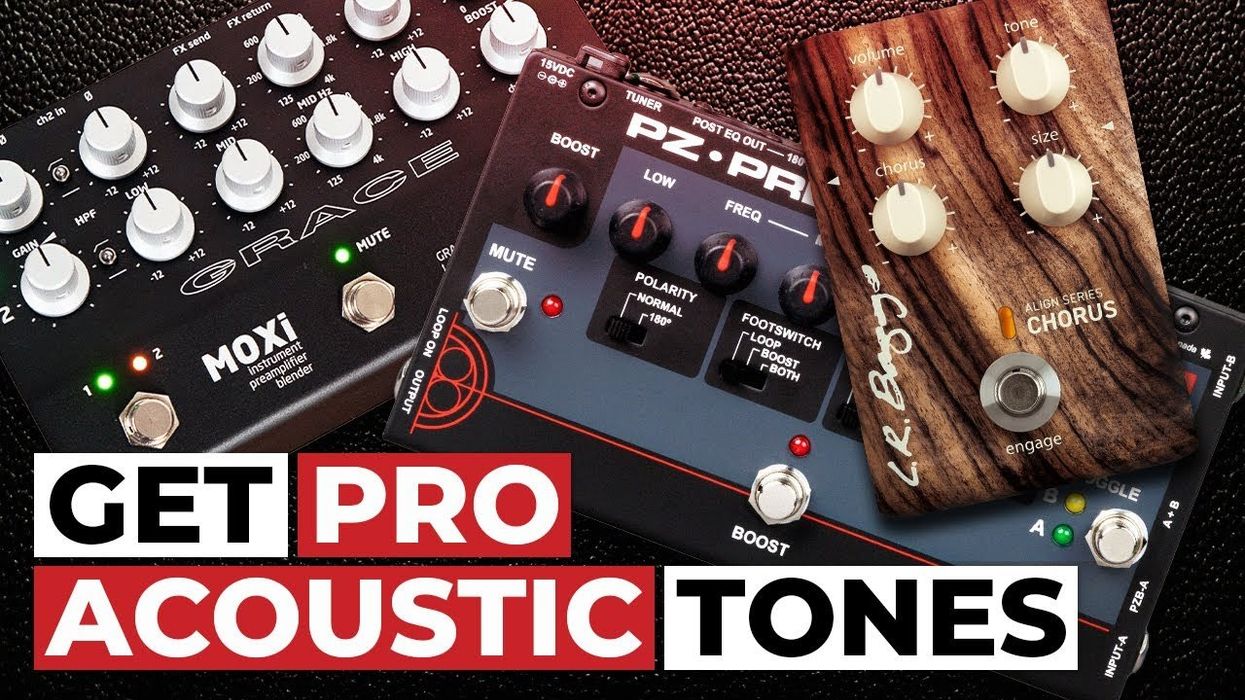Isolation transformers like the Palmer PLI-01 (left) or Ebtech Hum Eliminator can come to the rescue if you're experiencing ground loops with your rig, so keeping one in your gig bag is a good idea.
Last month, we talked about sources of unwanted noises that originate from electric guitars. To follow up, I'd like to address some common causes of extraneous, unwanted noises originating from wireless units, pedalboards, and amplifiers.
Ground loops are the enemy. What is a ground loop? It's a semi-complicated subject, but suffice to say that when you have more than one path to ground, ground loops can occur. And the net result is annoying buzz. Ideally, you want to ensure that all circuits are referenced to one point as ground.
Let's look at the basic example of using an A/B box to split your guitar signal to two amplifiers. If each amp is plugged into an AC-power source using a 3-prong cable, and you use two standard guitar cables to connect the amps from the sends of the A/B box, you will end up with a ground loop and the resulting characteristic buzz. If you were to use a 3-prong to 2-prong adapter as a “ground lift" on one amp's AC cable, the buzz would disappear since you'd be eliminating one path to ground. This will work in a pinch, but this method isn't really advisable or safe.
The best alternative is to use something called an isolation transformer on the instrument cable path, running from the A/B box to the second amp's input. The PLI-01 from Palmer and the Ebtech Hum Eliminator are just two examples of good options for this task. They essentially break the ground connection by using the audio path instead of the AC path, and are a much safer way to eliminate a ground loop. Many popular A/B boxes already have an “iso" switch built in to isolate one output, and the result is the same: the ground loop is broken and the buzz disappears.
Isolation is good (at least for your pedals). A regulated, isolated power supply is a must when it comes to powering pedals on a pedalboard, and you want reliable low-noise power. I recommend avoiding the daisy-chain-type power supplies if you can, and instead invest in a power supply that has all power outputs isolated. Companies like Friedman, T-Rex, Strymon, MXR, and Voodoo Lab make great power supplies with all the outputs isolated.
Tubes, circa 2019. Most of us guitarists still use tube amps, because they are hard to beat for their tone and simplicity. However, tubes aren't what they used to be! They are all made in either China, Russia, or Eastern Europe now, and quality control can vary wildly. Reliable, low-noise tubes are becoming harder and harder to find, so it's best to always keep spares on hand. If your amp produces whistling, popping, or microphonic-feedback noises, the source could be a dodgy preamp tube. Low hum, excessive distortion, or rattling, however, can all be signs of a bad power tube.
One thing you can do is tap the tubes gently with a pencil (or something else non-conductive) and check if one tube sounds exceptionally noisy with ringing or crackling. If you think a preamp tube might be causing issues but the tap test fails to identify the culprit, replace one tube at a time and listen closely to see if the noise disappears. Power tubes, on the other hand, are more difficult, so it's best to consult an amp tech before replacing those.
Wireless systems. Modern digital wireless units generally sound terrific and there's usually not much involved with setting them up. Plug the transmitter into the guitar, run a cable from the receiver to your pedals (or amp), and you're good to go with tone and output very similar to using a good cable. But interestingly, noise issues can arise with some upper-end rackmount units that offer more in the way of flexibility.
On units that allow you to set transmitter output level and receiver input and/or output levels, always check to see if the tone, noise, and output is similar to using a cable. You may have to adjust levels on both the pack and receiver. I have found this with the Shure ULX-D system I use in Japan. It sounds terrific and I've never had a dropout, but I did have to tweak the system to dial the levels in with my setup. A/B with a cable and a relatively clean sound to dial in levels so they match. Also, ground loops are very common when using upper-end wireless units into guitar amps. You may need to use an isolation transformer on the audio line running from the wireless receiver's output to the input of your pedals or amp. Manufacturers take note: I'd love it if you included a switchable iso transformer on the 1/4" output of your wireless units!
Moral of the story: Carry spare tubes, and pick up an isolation transformer to keep on hand in case unexpected noises arise. My guitar rig has at least a few iso transformers in key places, and even with long cable runs and high gain, it's ground-loop free and quiet.
Until next month, I wish you low noise and great tone!


